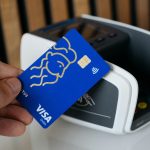
A visit to the doctor/medical clinic is often solemn, and many people put off such visits for as long as they can. There are ways of negating this dreary experience and making patient visits to your clinic a pleasant one or, at the very least, not postpone medical attention. Creating an enjoyable experience in a clinic visit need not be an expensive exercise requiring an overhaul of activities. Certain simple adjustments requiring minimal expenditure can change people’s attitudes toward clinic visits.
- Clinic Aesthetics
Clinic aesthetics are not a priority for many clinic owners as they focus on attributes directly related to clinical services. But imagine patients who endure long waits at the clinic waiting room, gazing at neutral decor. Most of these patients are already in an unwell physical state, and a good ambiance in the room can go a long way to make a difference in their mental state.
Modest additions to the clinic reception area like plants, cheery color schemes on walls, wall hangings, etc., add an aesthetic appeal to the room. The setup of the clinic should enable ease of movement for visitors. Signage and arrangement of rooms in a fluid manner enhances ease of maneuvering, e.g., location of the reception at the entrance and the pharmacy near the exit of the clinic.
A clinic environment usually has an information display, and you can use it to enhance the decor in the clinic. Whether you are educating your audience on specific diseases or information on credentials of attending physicians, you can use colorful design and graphics to do this. This will make your patients more likely to read the information.
- Bedside Manner
Professional bedside manners are vital for all clinical staff, not just the attending physicians. Visitors to the clinic need to feel welcome and at ease at each service point to enhance their overall satisfaction. The front desk receptionist should be welcoming, and all internal staff should be professional and compassionate.
While some staff customer service skills are exemplary, others need some training to achieve it. You should identify those staff prone to discourtesy towards visitors at the clinic and train them. Bedside manner training for clinical staff aims to transfer the skills of developing trust and empathy with patients. Engaging attributes include strong communication, creating good first impressions, patience, professionalism, listening skills, among others.
- Ease of Processes
Long queues are prevalent in clinics adding to the inconveniences that patients go through when visiting the establishments. Ideally, patients want clinic trips made as quickly as possible to get back to their other business. One of the causes of delays/long queues in a clinic is challenges with access to patients’ medical records. Ease of access to Electronic Medical Records (EMR) like billing information will make clinical services efficient.
In clinics, the EMR system keeps patients’ medical records, diagnoses, treatment protocols, prescriptions, and other patient records. Such records enable staff to easily retrieve patient information before consultation with the physician. If the EMR system has delays, you likely need an EMR conversion plan. The conversion plan upgrades the EMR system and enhances its efficiency.
- Cleanliness
Many people have high expectations of cleanliness in their environment and especially within a health center. The clinical setting is prone to viruses, and maintaining spectacular cleanliness standards keeps infections at bay. Visitors to your clinic are aware of the germ exposure and feel safe when they find it sparkling.
You can keep your clinic safe without breaking the bank. It is essential to frequently clean and sanitize all surface areas regularly during the day. You should also dispose of waste in bins several times a day and dust hard-to-reach surfaces. Surfaces and implements which people touch frequently should be cleaned and disinfected. Objects/surfaces requiring recurrent cleaning are countertops, TV remote control, door handles, bathrooms, etc.
- Ability to Provide Feedback
Like any service institution, clinic visitors need to share their feedback on the service experience. You can allow the service seekers to share their opinion through a survey. The survey results will provide the clinic a feedback mechanism for improving its quality of services.
When designing the survey, opt for clear and concise questions to get specific responses. You can also utilize an online survey format in which visitors to the clinic respond through their mobile phones as soon as they complete the visit. With feedback from such surveys, you can continuously improve service levels at the clinic and enhance customer satisfaction.
Improve Patient Experience
The bottom line is constantly monitoring your service processes and improving them. You will find that in some cases, a few tweaks make a big difference in customer experience. All systems in the clinic should aim to provide excellent service, and the surveys will give feedback on how customers are responding to the changes in place.












